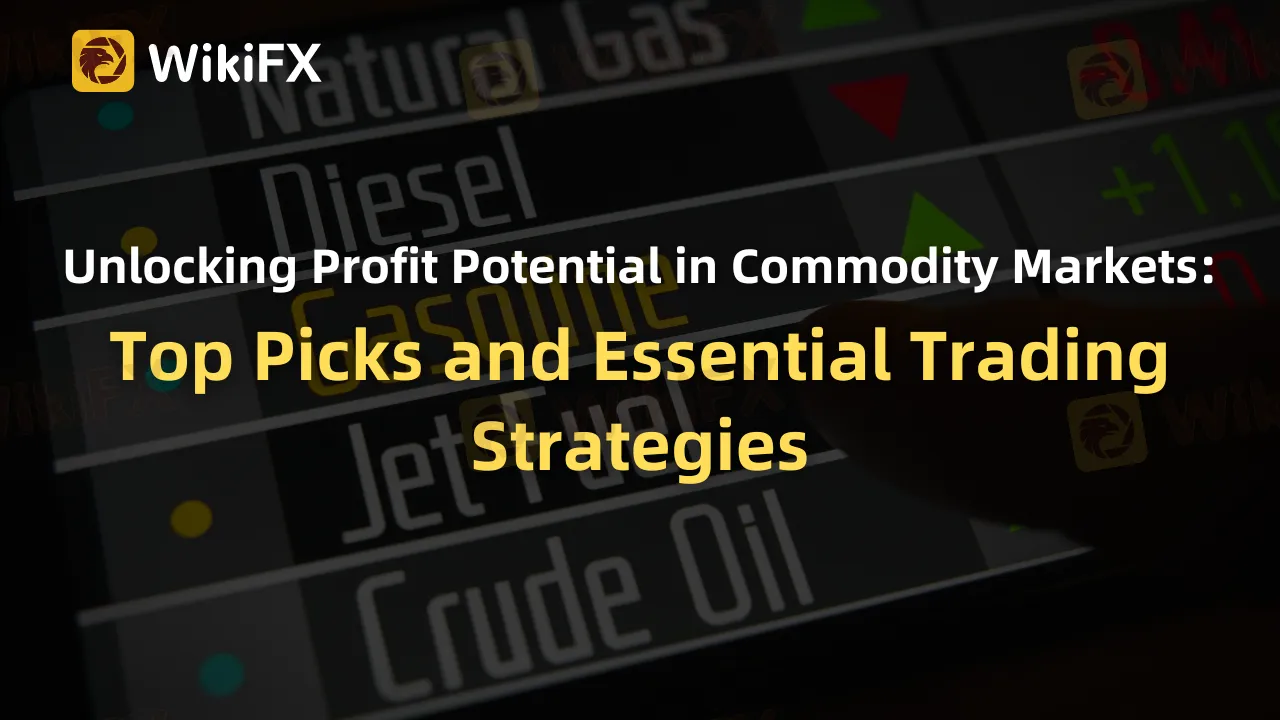Abstract:The best commodity to trade depends on personal goals, risk tolerance, and market knowledge. Popular options include crude oil, gold, agricultural commodities, and industrial metals. Successful trading requires well-defined strategies, understanding price influencers, and managing risks like volatility, leverage, and regulatory changes.

Since the beginning of human civilization, commodities have been at the center of trade and economic development. Commodity trade has influenced the world economy by influencing everything from agricultural items like grains, cattle, and soft commodities to raw materials like metals, minerals, and oil. It has never been simpler for traders to access and trade commodities thanks to the development of internet trading platforms and derivative products. What goods, however, are ideal for trading? This article will examine the world of commodity trading, evaluate various commodities, and provide information that might aid traders in making wise choices.
Understanding Commodities
Commodities are basic resources and main agricultural products that may be purchased and sold on financial markets. They are grouped into two major categories:
A. Hard Commodities: These include natural resources such as oil and natural gas, precious metals (gold, silver, and platinum), and industrial metals (copper, aluminum, and zinc).
B. Soft Commodities: These include agricultural items such as grains (wheat, maize, soybeans), animals (cattle, pigs, poultry), and other food products (sugar, chocolate, coffee).
Commodities are often traded in standardized contracts known as futures contracts on regulated exchanges such as the Chicago Mercantile Exchange (CME), Intercontinental Exchange (ICE), and London Metal Exchange (LME).
Factors Influencing Commodity Prices
Commodity prices may be influenced by a number of variables, including:
A. Supply and Demand: The balance of supply and demand is the most important element influencing commodity pricing. A glut of a product may cause prices to fall, whereas a scarcity might cause prices to rise.
B. Geopolitical and Economic Factors: Geopolitical events, such as wars or trade disputes, may interrupt commodity production and distribution, causing prices to rise. Commodity prices may also be influenced by economic variables such as GDP growth, inflation, and currency volatility.
C. Weather and Climate: Droughts and floods, for example, may have an impact on agricultural commodity output, creating price changes.
D. Technological Advances: Innovations in agricultural, mining, or energy production may boost commodity production efficiency, resulting in changes in supply and, as a result, pricing.
The Best Commodities to Trade
There is no one-size-fits-all response to the question of which commodity is best to trade since the choice is determined by personal trading goals, risk tolerance, and market knowledge. However, due to their liquidity, volatility, and profit potential, certain commodities are more popular among traders. Some examples are:
A. Crude Oil: Crude oil is one of the most commonly traded commodities on the global market since it is the primary source of energy for many industries. Geopolitical events, economic indicators, and technological developments all have a significant influence on its price, making it a highly volatile and potentially profitable commodity to trade.
B. Gold: Because its value tends to persist over time, gold is typically seen as a safe-haven asset during times of economic uncertainty. It also serves as an inflation hedge, making it a viable option for traders looking to diversify their portfolios.
C. Agricultural Commodities: Wheat, maize, and soybeans are among the most liquid agricultural commodities. They are greatly impacted by weather, making them vulnerable to price fluctuations that might provide trading opportunities.
D. Industrial Metals: Copper and aluminum are extensively utilized in a variety of sectors, and their pricing may convey information about the world economy. Their demand is directly related to the performance of industries such as construction, automotive, and electronics.

Strategies for Trading Commodities
When trading commodities, it's essential to have a clear strategy in place. Some common trading strategies include:
A. Trend Following: Traders who follow trends aim to capitalize on sustained price movements in a specific direction. They use technical indicators like moving averages or the Relative Strength Index (RSI) to identify trends and execute trades accordingly.
B. Range Trading: This strategy involves trading commodities within a defined price range. Traders identify support and resistance levels within a range and buy at the lower boundary (support) and sell at the upper boundary (resistance), expecting the price to bounce between these levels.
C. Fundamental Analysis: Traders who use fundamental analysis focus on the underlying factors affecting commodity prices, such as supply and demand, geopolitical events, or macroeconomic indicators. They use this information to forecast future price movements and make informed trading decisions.
D. Technical Analysis: Technical analysis involves using historical price data and various charting tools to identify patterns or trends in the market. Traders use indicators like moving averages, trendlines, and oscillators to make decisions on when to enter or exit trades.
Risks and Challenges in Commodity Trading
While commodity trading can be lucrative, it also comes with inherent risks and challenges:
A. Volatility: Commodity prices can experience sharp fluctuations due to factors like weather, geopolitical events, or economic data releases. Traders must be prepared to manage their risk and adapt their strategies to changing market conditions.
B. Leverage: Many traders use leverage to increase their potential returns, but it can also magnify losses. It is crucial to understand the risks associated with leverage and use it judiciously.
C. Regulatory Changes: Changes in regulations and government policies can impact the commodity markets, leading to price shifts or trading restrictions. Traders must stay informed about relevant regulatory changes and adjust their strategies accordingly.
D. Storage and Transportation: Physical commodities like agricultural products or metals may require storage and transportation, which can involve additional costs and logistical challenges. Traders should be aware of these factors when trading physical commodities or derivatives linked to them.
Conclusion
What commodities are the best to trade among the available lineups? has no clear-cut answer. Choosing the best option relies on a person's trading objectives, risk tolerance, and market expertise. Nonetheless, well-known commodities such as crude oil, gold, food, and industrial metals offer numerous opportunities for traders to profit from price fluctuations.
Commodity traders must have a well-defined trading strategy, understand what impacts commodity prices, and be prepared to deal with the risks posed by volatility, leverage, and regulatory changes. With the appropriate strategy, traders may successfully traverse the dynamic world of commodities trading and perhaps achieve big financial gains.
Download and install the App on your smartphone to stay updated on the latest news.
Download the App here: https://social1.onelink.me/QgET/px2b7i8n














